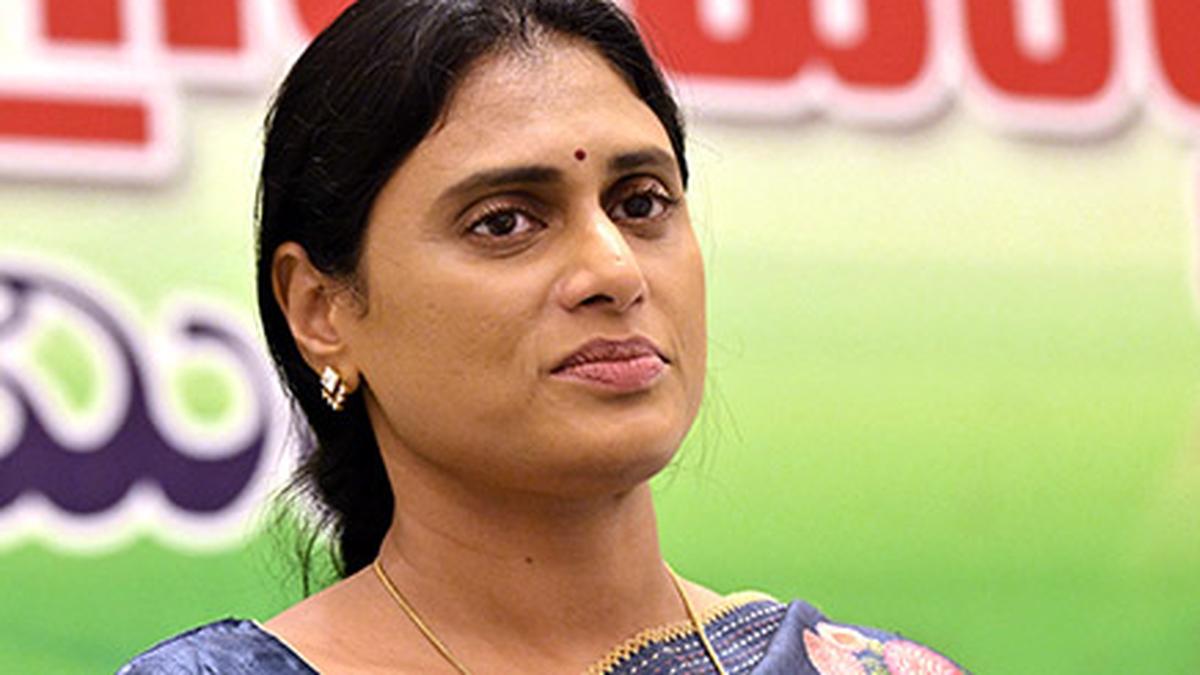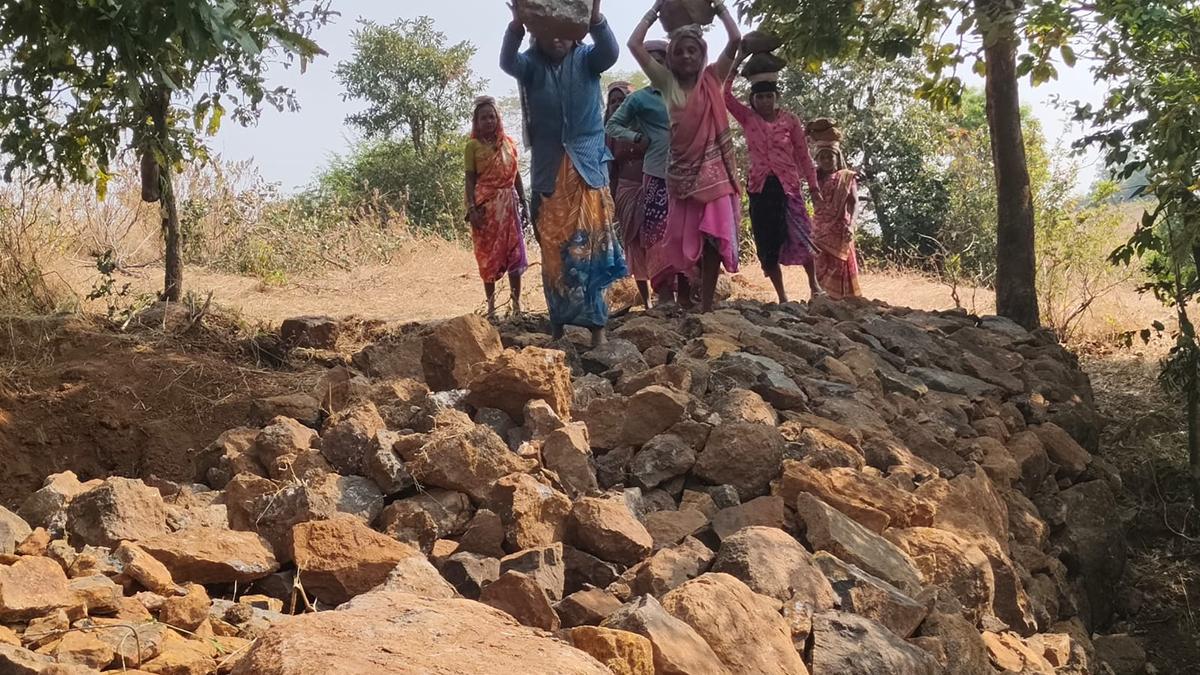Downing alcohol after work is all Mallesh (name changed to protect identity), 31, can think of as he toils away at a powerloom unit in Madanapalle town. Beginning his day early, Mallesh spends long hours behind the loom, its loud hum and the thick, permeating smell of dye, a necessary evil he enjoys. Mallesh finishes weaving two silk sarees by the evening, and leaves for home with his daily wage of ₹1,500 for a job well done.
Before going home, Mallesh pays a quick customary visit to the local ‘wine shop’, and ends up spending half of his wages there, sometimes even more. The liquor helps dull his body ache, or so Mallesh believes, and he hits the bed soon after going home. Mallesh’s life is like one of thousands of loom workers across undivided Chittoor district in Andhra Pradesh.
At the end of every month, workers like Mallesh are left with little to no money, and all too often, end up taking loans from private moneylenders (who, in some cases are their employers), to meet the expenses of important family events, such as the wedding of a daughter. Many abscond to their native villages unable to repay the money, only to be quickly replaced by a new batch of workers.
Those who persist in the trade soon end up with chronic health issues brought about by years of drinking. This leads to a loss of livelihood and a lifetime of penury. The youth are slowly becoming sceptical of following in the footsteps of their parents, and are keen on migrating to professions that pay more and places with more opportunity.
T. Malathi, 28, the daughter of a weaver from Chenetha Nagar, has migrated to Bengaluru where she works for an MNC as a software engineer. She is one of a growing number of youth to have shunned the occupation due to its lack of sustainability, and is urging her parents to join her in Bengaluru. But her ageing parents, who have known nothing but weaving all their lives, find it difficult to concede to her wishes.
“I see no point in carrying on my family occupation, but many families, despite living in penury, have no other option but to continue in the trade thanks to illiteracy,” Malathi says. The employers running the powerloom or handloom units are not much better off. With dwindling demand for their product on one hand and rising input costs on the other, the weavers barely manage to stay afloat.
The undivided Chittoor district held the weaver towns of Madanapalle with about 45,000 weavers; Chenetha Nagar, just 3 kilometres away, with 2,000 weavers; and Nagari town with about 30,000 weavers, as per the State Department of Handlooms and Textiles. In a district reorganisation exercise conducted by the State government two years ago, Madanapalle became a major municipality in the carved-out district of Annamayya, while Nagari, about 150 km away, remained part of the residual district of Chittoor. Since it is on the border of Tamil Nadu, Nagari has several weaver migrants from the State.
“Madanapalle is famous for its excellent quality of silk sarees. The sarees produced here are sold elsewhere as Kancheepuram sarees, and most customers cannot even tell the difference. Sadly, the Kancheepuram sarees enjoy a GI tag, whereas we don’t,” says K. Viswanathan, 68, an elderly powerloom owner.
Campaign cacophony
With only a few weeks left for the general elections, the weavers’ community, which is predominantly made up by the Pogataveera Kshatriya and Padmashali castes, both from the Backward Class (BC) communities, is once again being courted by political parties. However, Viswanathan rues that he has seen many elected governments come and go, without making good on the promises they carried in their manifesto.
“Thousands of weavers’ families in the region dream of getting a Geographical Indication (GI) tag for our sarees. But neither the Centre nor the State government has been able to make this dream a reality. Politicians continue to neglect our genuine demand. They want to exploit us as a vote bank and will never like to see us thrive as a business community,” says Viswanathan, his wrinkles telling the story of hard work and many trials.
‘Loom’ families claim that the much-publicised Nethanna Nestam (translating to weaver’s friend, in Telugu) scheme of the Y.S. Jagan Mohan Reddy government, under which an annual dole of ₹24,000 is paid to each beneficiary, is meant only for the handloom sector, which forms a small part of the weavers’ community. The ratio of powerlooms and handlooms is 8:2. Even in the handloom sector, the government’s dole largely benefits the owners and not the workers.
Many families remember the promises made by the NDA ahead of the 2014 general elections, when Madanapalle was still part of Chittoor district. Telugu Desam Party (TDP) national president N. Chandrababu Naidu had promised to make Madanapalle the “brand ambassador” of the silk sarees of A.P. That promise led to renewed hopes of getting a GI tag, but it was not to be.
This time around, Naidu has said that if voted to power, the NDA government would provide 500 units of free electricity to the powerloom sector. He has also promised the establishment of a textile park at Nagari, which is home to around 30,000 families dependent on the powerloom sector. The TDP chief’s promises were conspicuous for their lack of any substantial assurance for the handloom sector.
On the wish list
Weavers have long been asking for subsidies for procuring silk. “We travel to Bengaluru to buy cocoons, silk yarn, and dyes. We do not get any subsidy on these. Prices are shooting up year after year, with an increase in 40-50% in the last five years. Our labour remains more or less the same. The demand of workers to increase the wages per metre of cloth is always met with stiff opposition from employers. The Central and State governments should consider giving subsidies on purchase of raw material,” says Gangadhar, in his 50s, a father of three, aged 12, 15, and 18. All three girls join their parents at the loom, helping them earn extra money. “I work for three hours a day. It will help us save up for my eldest sister’s wedding,” says the youngest.
In the last five years, the powerloom sector families have been demanding that the YSRCP government provide them with subsidies in power consumption and procurement of raw materials. Though the State government this year announced a 94 paise subsidy per unit for the powerloom sector, stakeholders say it is of little benefit to them, considering the skyrocketing prices of raw materials and the escalating electricity charges.
Family planning is something the community has not given much thought to, says a senior official of the Sericulture Department. “For generations, they would welcome any number of children because manpower used to be of great value particularly when handlooms used to be dominant. Now, with the advent of powerlooms, families no longer need to have several children to support them, but the average family still continues to have at least three kids,” he said.
Jayanthi, a powerloom worker in Madanapalle, says having three children should not exempt her from deriving benefits of government welfare schemes. “I have two daughters studying in Classes VIII and IX. Only one of them is getting the benefits of the Amma Vodi scheme [education assistance],” she says, adding that the fine print about the scheme restrictions were never told to them. “Naidu has promised a similar scheme, with a dole of ₹15,000 for up to four children from each family. This will benefit not just me but a majority of the weavers’ families who on average have three children,” she says.
Changes and challenges
“In Madanapalle, most agents (middlemen, who thrive in the system) are workers of political parties. For decades, our finished products have been sold in Chennai, Kancheepuram, Mumbai, and other cities for princely sums. A silk saree, which fetches us ₹7,000 apiece, would be sold at ₹25,000 to ₹30,000 there. Sarees which we painstakingly craft find their way to Tamil Nadu, from where they are exported abroad as a Kanchi saree with a GI tag. All our hard work goes unrecognised,” says a handloom weaver.
COVID-19 played havoc with the weavers’ livelihood for over three years between 2020 and 2023. With production coming to an abrupt halt in March 2020, the weavers who were mostly dependent on daily wages went through an ordeal.
In Nagari town, over 30,000 families were thrown into the lurch. Most of the owners who were based in Chennai shut shop, paying a token sum to the workers. “We went for two years without work. We took on loans from our employers at high interest rates. Once the looms reopened in 2023, all our earnings went towards repaying our debt. We are still paying off our loans. In view of such calamitous conditions, the government should think of viable ways to come to our rescue,” says Gunasekhar Nandi, 48, a powerloom worker whose wife passed away during the peak of the pandemic.
Vinodh, a middleman from Chennai, blames China for the plight of the weaving sector in India. “Before the pandemic, Nagari’s powerloom sector had a turnover of over ₹100 crore. Now, the figure has come down by 40%,” he says. “Weavers’ families in Nagari are illiterate. Unfortunately, the powerloom sector does not enjoy any subsidy worthy of the workers’ labour. However, the same sector in the north-western districts of Tamil Nadu is flourishing thanks to subsidies, including free electricity. If the State government here does not step up to help, you cannot expect patrons to come to the workers’ rescue every time,” Vinodh says.
A powerloom owner from Erode in Tamil Nadu, Tirumurthy Mudaliar, 63, who runs a unit in Nagari, fears that the plight of the sector will worsen in the coming years. “The Chinese are competing relentlessly with our workers when it comes to the manufacture of yarns, dyes, and silk. With advanced machines, the Chinese are extraordinarily faster when it comes to producing cloth bales. Our sector will be in complete peril soon,” he says, hoping that the future government will help herald a Chinese-style powerloom revolution in Andhra.

 1 week ago
105
1 week ago
105



